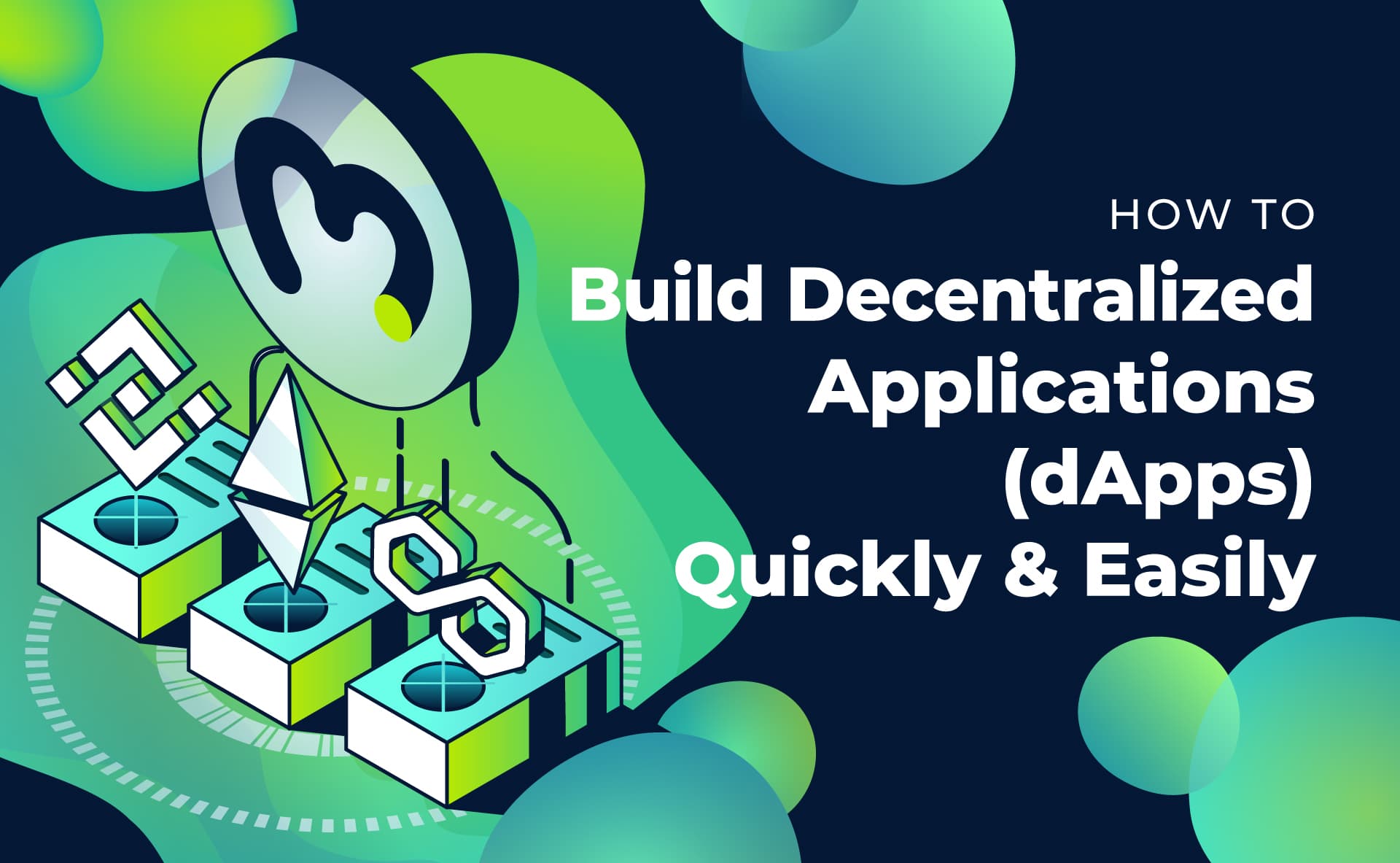How to Develop Decentralized Applications (dApps)

- Understanding the Basics of Decentralized Applications
- The Benefits of Developing dApps
- Choosing the Right Blockchain Platform for Your dApp
- Key Components of a Successful dApp Development Process
- Security Considerations for dApp Development
- Tips for Testing and Deploying Your dApp
Understanding the Basics of Decentralized Applications
Decentralized applications, or dApps, are a type of software application that runs on a decentralized network of computers rather than a single centralized server. This means that dApps are not controlled by any single entity, making them more secure, transparent, and resistant to censorship.
One of the key features of dApps is that they use blockchain technology to store and manage data. Blockchain is a distributed ledger that records transactions across a network of computers in a secure and tamper-proof way. This makes dApps ideal for applications that require a high level of security and trust.
Another important aspect of dApps is that they are open-source, meaning that anyone can view, copy, and modify the code that powers them. This fosters collaboration and innovation within the dApp community, leading to the development of new and improved applications.
Overall, understanding the basics of decentralized applications is crucial for anyone looking to develop dApps. By leveraging blockchain technology, open-source principles, and decentralized networks, developers can create secure, transparent, and censorship-resistant applications that offer a wide range of benefits to users.
The Benefits of Developing dApps
dApps offer a wide range of benefits that make them an attractive option for developers and users alike. One of the key advantages of developing dApps is their decentralized nature, which means that they are not controlled by any single entity. This decentralization helps to increase transparency and security, as there is no central point of failure that can be exploited by malicious actors.
Another benefit of dApps is their ability to run on a blockchain, which provides a high level of immutability and trustlessness. This means that once data is recorded on the blockchain, it cannot be altered or deleted, ensuring the integrity of the application. Additionally, dApps can leverage smart contracts, which are self-executing contracts with the terms of the agreement directly written into code. This automation helps to reduce the need for intermediaries and streamline processes.
Furthermore, dApps are often open-source, meaning that their code is publicly available for anyone to view, audit, and contribute to. This fosters a collaborative development environment and encourages innovation within the community. Additionally, open-source dApps can benefit from peer review, which helps to identify and fix potential vulnerabilities.
Choosing the Right Blockchain Platform for Your dApp
When developing a decentralized application (dApp), one of the most crucial decisions you will need to make is choosing the right blockchain platform to build your dApp on. The blockchain platform you select will have a significant impact on the performance, scalability, and security of your dApp. There are several factors to consider when evaluating different blockchain platforms for your dApp.
One of the first things to consider is the consensus mechanism used by the blockchain platform. Different blockchain platforms use different consensus mechanisms, such as Proof of Work (PoW), Proof of Stake (PoS), Delegated Proof of Stake (DPoS), and others. Each consensus mechanism has its own strengths and weaknesses, so it’s essential to choose one that aligns with the goals and requirements of your dApp.
Another important factor to consider is the programming language supported by the blockchain platform. Some platforms support multiple programming languages, while others are more limited in this regard. Choosing a platform that supports a programming language you are familiar with can make the development process smoother and more efficient.
Scalability is another critical consideration when choosing a blockchain platform for your dApp. Some platforms are better suited for handling a high volume of transactions than others. If your dApp is expected to have a large user base or process a significant number of transactions, scalability should be a top priority when evaluating different platforms.
Security is also a crucial factor to consider when selecting a blockchain platform for your dApp. Look for platforms that have a strong track record of security and have implemented robust security features to protect against potential threats such as hacking and fraud.
Ultimately, the right blockchain platform for your dApp will depend on your specific needs and requirements. Take the time to research and evaluate different platforms to find the one that best aligns with your goals and will set your dApp up for success in the long run.
Key Components of a Successful dApp Development Process
One of the key components of a successful dApp development process is thorough planning and research. Before diving into the development phase, it is crucial to have a clear understanding of the problem you are trying to solve and the target audience for your decentralized application. Conducting market research and competitor analysis can provide valuable insights that will help shape your dApp’s features and functionality.
Another important aspect of dApp development is choosing the right blockchain platform. Different blockchain networks offer various features and capabilities, so it is essential to select a platform that aligns with your project requirements. Ethereum is one of the most popular choices for dApp development due to its smart contract functionality and large developer community. However, other platforms like EOS, Tron, and Binance Smart Chain also offer unique advantages for building decentralized applications.
In addition to selecting the appropriate blockchain platform, developers must also consider the user experience (UX) design of their dApp. A well-designed user interface can significantly impact the adoption and success of a decentralized application. It is essential to create an intuitive and user-friendly interface that makes it easy for users to interact with the dApp and access its features seamlessly.
Furthermore, security is a critical consideration in dApp development. Since decentralized applications operate on a blockchain network, they are susceptible to various security threats, such as smart contract vulnerabilities and hacking attacks. Implementing robust security measures, such as code audits, encryption, and multi-factor authentication, can help protect your dApp and user data from potential breaches.
Lastly, testing and deployment are crucial stages in the dApp development process. Thorough testing helps identify and resolve any bugs or issues before launching the decentralized application to the public. It is essential to conduct both unit testing and integration testing to ensure the dApp functions correctly and securely. Once testing is complete, deploying the dApp to the blockchain network requires careful attention to detail to ensure a smooth and successful launch.
Security Considerations for dApp Development
When developing decentralized applications (dApps), it is crucial to consider security implications to protect users and their assets. Security is paramount in the world of blockchain technology, where transactions are irreversible and anonymity is key. Here are some key security considerations for dApp development:
1. **Smart Contract Security**: Smart contracts are the backbone of dApps, so ensuring their security is essential. Audit your smart contracts thoroughly to identify and fix vulnerabilities that could be exploited by malicious actors.
2. **Secure Data Storage**: Data stored on the blockchain is immutable, meaning once it’s there, it can’t be changed. Encrypt sensitive data before storing it on the blockchain to prevent unauthorized access.
3. **User Authentication**: Implement robust user authentication mechanisms to verify the identity of users interacting with your dApp. Use multi-factor authentication and encryption to enhance security.
4. **Secure Communication**: Ensure that all communication between the dApp and external services is encrypted to prevent eavesdropping and man-in-the-middle attacks. Use secure protocols like HTTPS to protect data in transit.
5. **Regular Security Audits**: Conduct regular security audits of your dApp to identify and address any vulnerabilities. Stay up-to-date with the latest security best practices and patches to protect against emerging threats.
By prioritizing security considerations in dApp development, you can build trust with users and safeguard their assets. Remember, in the world of blockchain, security is not optional – it’s a necessity.
Tips for Testing and Deploying Your dApp
When it comes to testing and deploying your dApp, there are several tips to keep in mind to ensure a smooth process. Here are some key considerations:
- Conduct thorough testing of your dApp before deployment to identify and fix any bugs or issues that may arise.
- Utilize test networks such as Ropsten or Rinkeby to simulate real-world conditions and ensure your dApp functions as intended.
- Consider using automated testing tools to streamline the testing process and catch any potential issues early on.
- Once testing is complete, deploy your dApp on the mainnet to make it accessible to users.
- Monitor your dApp post-deployment to address any performance issues or bugs that may arise in a timely manner.
By following these tips, you can ensure that your dApp is thoroughly tested and deployed successfully, providing users with a seamless experience.






